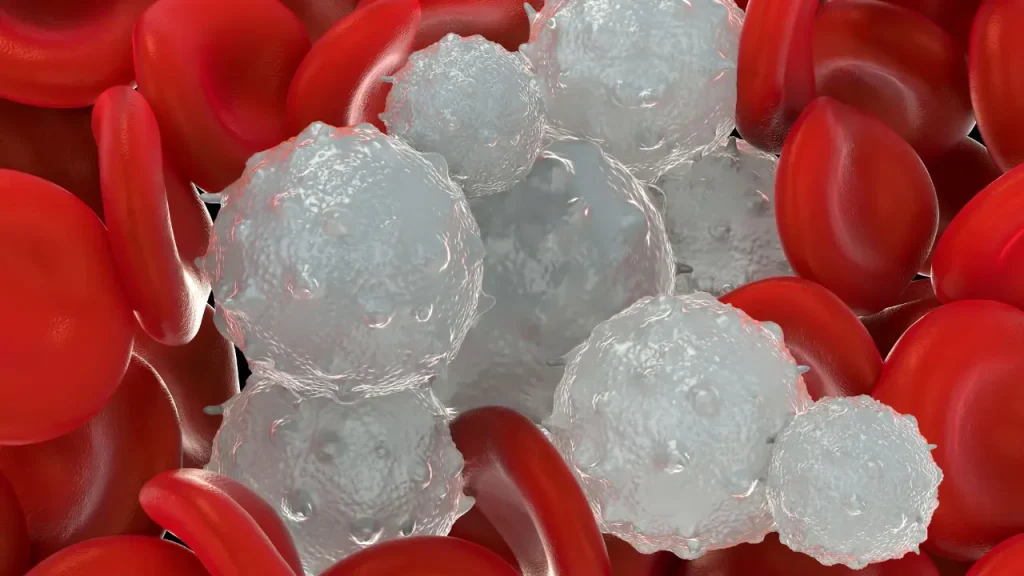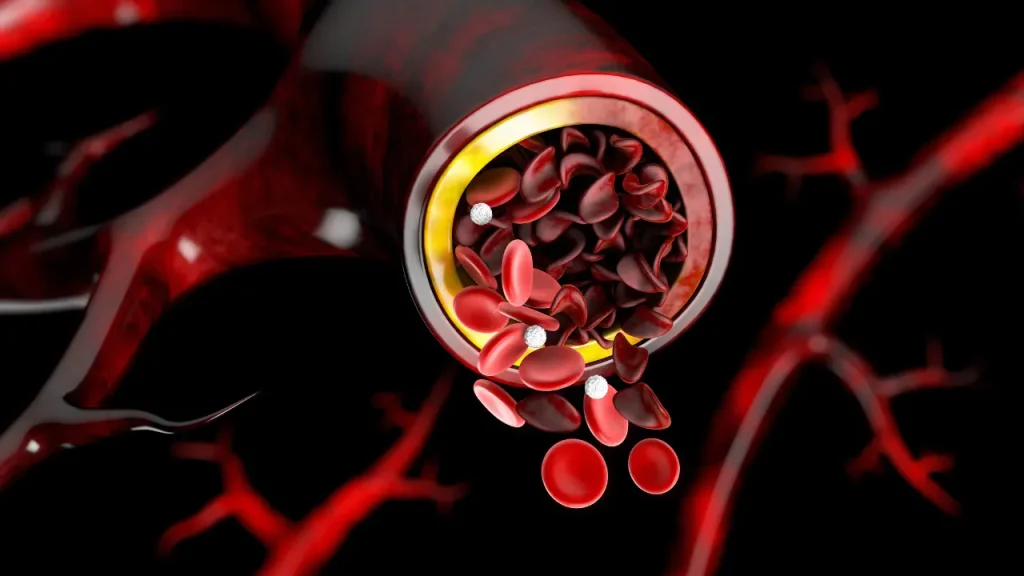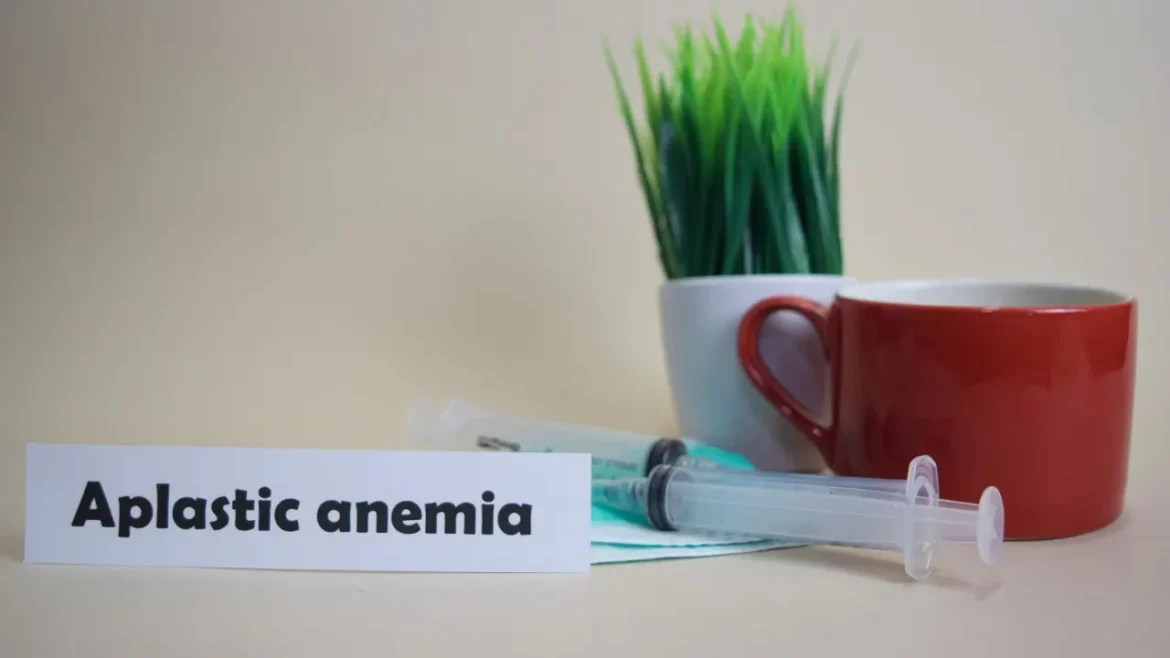Description
There is a hematological condition called Acquired Aplastic Anemia, and it is sometimes referred to as AA. This condition is characterized by a decrease in the formation of platelets, white blood cells, and red blood cells. The condition produces a failure of the bone marrow, which causes the stem cells in the bone marrow to be destroyed or damaged. AA can have a big impact on someone’s quality of life; thus, it needs to be diagnosed and treated right away.
Moreover, fatigue, shortness of breath, pallor, a higher vulnerability to infections, and ease of bleeding or bruising are common signs of AA. Bone marrow biopsies, blood counts, and genetic testing are diagnostic procedures used for ruling out inherited variants of Aplastic Anemia. According to red blood cell counts, AA severity is divided into three categories: severe, extremely severe, and non-severe forms of Aplastic Anemia.
You May Also Like:
TOP 10 BEST NATURAL PRE WORKOUT SUPPLEMENTS: IN-DEPTH REVIEWS
NATUREMYST KRILL OIL: A REVIEW OF THE FACTS ABOUT THIS LEADING OMEGA-3 PRODUCT
Acquired Aplastic Anemia: Description, Causes, And Treatment Protocol is an original (HealthXWire) article.
Possible Causes
There are a number of causes of Acquired Aplastic Anemia, or AA. The onset of AA has been linked to exposure to specific pharmaceuticals, including NSAIDs, antibiotics, and chemotherapeutic agents like benzene and insecticides. Radiation therapy in large doses damages bone marrow and can cause AA. Viral infections, especially those caused by hepatitis and Epstein-Barr viruses, can either cause an immunological reaction or directly harm bone marrow cells.
Furthermore, autoimmune conditions can result in AA whenever the immune system unintentionally targets the bone marrow. Idiopathic AA is the term used to describe cases of AA where the reason or cause for the disease’s appearance is unknown. Acquired Aplastic Anemia most likely results from a confluence of genetic susceptibility and environmental variables. To comprehend these causes fully, more study is required.
Exacerbating and Mitigating Factors
The complex ailment known as Acquired Aplastic Anemia, or AA, can be affected by a number of variables that either exacerbate the condition or slow its course. The following are some important things to think about:
Exacerbating Factors:
Environmental Toxins: Pesticides and other substances can aggravate or cause the development of AA. Reduced generation of blood cells may result from these chemicals’ negative effects on bone marrow activity. For people with AA, reducing exposure to environmental pollutants is crucial.
Infections: Through bone marrow suppression along with increased blood cell apoptosis, infections can exacerbate AA. White blood cell counts are lower in AA patients, which renders them more susceptible to infection. To stop additional bone marrow destruction, professionals must promptly diagnose infections, so that they can be treated effectively.
Nutritional Deficiencies: Folate, iron, and vitamin B12 deficiencies are three important elements that are essential for healthy blood cell synthesis and can worsen Anemia. The best bone marrow function depends on getting enough of these nutrients. To support the creation of new blood cells, doctors and patients should work together to target nutritional shortages, so that they can be treated as necessary.
Medications: The onset or worsening of AA has been linked to some drugs. Antibiotics, nonsteroidal anti-inflammatory medications (NSAIDs), and anticonvulsants are all linked to bring on the onset and/or worsen existing cases of AA. To prevent potential medication-related issues, it is crucial for patients to let their healthcare providers know about their AA diagnosis.
Mitigating Factors:
Toxin Avoidance: Utilizing preventative measures when appropriate and limiting exposure to environmental pollutants, such as quitting smoking and avoiding occupations that require daily contact with hazardous chemicals, can help preserve bone marrow functioning.
Infection Prevention: Practicing basic hygiene, getting the required vaccines, and avoiding contact with sick people are all preventative actions that can lower the possibility of infections and lessen their negative effects on bone marrow functions.
Healthy Lifestyle: The management of AA can benefit from leading a healthy lifestyle. Regular physical activity, a well-balanced diet, sufficient rest, and stress management skills may support general health and enhance bone marrow activity.
Medication Awareness: Individuals with AA must notify their healthcare professionals about their disease to ensure suitable drug selection and reduce the use of medications that may have a detrimental impact on bone marrow functioning. Regular medication evaluations can help find and change potentially dangerous drugs.
Supportive Care: Growth factors, prophylactic antibiotics, and blood transfusions are examples of supportive care practices that can help treat AA-related symptoms and consequences and improve overall health and standard of living.

Standard Treatment Protocol
The goal of the typical AA treatment plan is to restore blood cell levels and restore bone marrow function. The particular treatment strategy depends on multiple variables, including the extent of AA, the patient’s age and general health, and the accessibility of a donor who might be suitable for a stem cell transplant.
The main types of treatment include:
Immunosuppressive Therapy: Patients with mild to moderately severe AA who cannot receive a stem cell transplant typically receive immunosuppressive medication. It entails taking drugs to inhibit immune system activity and the breakdown of the cells of the bone marrow.
The two principal medications utilized in immunosuppressive treatment for AA are:
- Cyclosporine
An anti-immune system suppressant called cyclosporine prevents T cells from becoming activated. It works to stop AA from returning following treatment when taken commonly in conjunction with ATG.
- Antithymocyte Globulin (ATG)
ATG originates from either animal or human sources, and it functions by concentrating on and eliminating T cells, which are crucial in the devastation of bone marrow cells. ATG is frequently taken with other immunosuppressive medicines.
Many AA patients, particularly individuals who are still young and have had the condition for a shorter periods of time, can benefit from immunosuppressive therapy in terms of resuming blood cell formation.
Stem Cell Transplantation: For younger individuals with acute AA who possess a qualified donor, stem cell transplantation, additionally referred to as transplantation of bone marrow, is thought to be the most effective form of treatment. The degenerated bone marrow is replaced during this treatment using healthy stem cells obtained from a compatible donor. Matched unrelated donors, siblings, and umbilical cord blood are all sources of stem cells.
In individuals suffering from AA, stem cell transplantation provides the possibility of prolonged remission or cure; nonetheless, it entails major risks and necessitates careful consideration of the patient’s situation and donor compatibility. This might be linked to side effects like graft-versus-host disease (GVHD), along with the possibility of relapse or rejection.
Supportive Care: The consequences and symptoms linked to Acquired Aplastic Anemia must be managed with supportive care. It emphasizes solving particular requirements, like:
- Infection Management
Antibiotic prophylaxis and quick infection treatment are crucial for AA patients since they are more susceptible to infections because of lower white blood cell levels.
- Blood Transfusions
To treat Anemia-related symptoms including exhaustion and breathlessness, regular blood transfusions might be necessary. To keep proper blood cell counts, transfusions are a short-term option.
- Medications that Increase Blood Cell Production
White blood cell production can be induced using substances like granulocyte-colony stimulating factor (G-CSF).


Treatment Options
In order to address Acquired Aplastic Anemia along with the conventional protocols, researchers have investigated several adjunct treatments and complementary methods. The effectiveness and security of these medical procedures are still being researched. Therefore, one should see a healthcare provider before starting any adjunct therapies, which is essential to remember. Following are a few examples of adjunctive therapies:
Prescription Medications:
These include:
- Eltrombopag
An agonist of the thrombopoietin receptor, eltrombopag, can promote the synthesis of platelets. The increase in platelet counts among AA patients has produced encouraging effects.
- Danazol
Synthetic androgen danazol has been administered certain AA patients to increase red blood cell production. It functions by increasing erythropoietin synthesis, a hormone essential for the development of red blood cells.
Over-the-Counter Formulations:
These include:
- Iron Supplements
If a person has an iron deficit, supplements may help prevent Anemia from getting worse. A healthcare practitioner should be consulted before using iron supplements since too much iron might be dangerous.
- Mineral and Vitamin Supplements
To produce blood cells as efficiently as possible, it is critical to consume enough vitamins and minerals, particularly folate, vitamin B12, and zinc. If inadequacies are found, supplements may be helpful.
Nutritional Supplements:
These include:
- Coenzyme Q10
This antioxidant possesses the potential to improve how effectively patients respond to traditional therapy. As mitochondrial function is essential for bone marrow cells, it may lessen oxidative damage and support it.
- L-carnitine
According to certain research, patients with AA may produce more red blood cells when given L-carnitine supplements. To determine its effectiveness, more research is necessary.
Herbal and Natural Remedies:
These include: –
- Ginseng
In conventional therapy, ginseng has been used to boost overall health and fortify the immune system. It might be useful as a complementary therapy to AA.
- Astragalus Root
Astragalus root has been reported to improve immunological performance and boost bone marrow development. For numerous blood diseases, including AA, it has been employed by traditional Chinese medicine to provide additional therapy.
However, it is critical to stress to you that these adjunctive treatment alternatives should be explored with a healthcare provider because their safety and effectiveness are still being studied, and there may be interactions with other medicines that are already in use.


Conclusion:
Acquired Aplastic Anemia is a dangerous disorder if/when left undiagnosed and untreated. It affects important parts of the body, such as the blood and the bone marrow, which can have startling effects on one’s health. There is an existing body of research on this condition which purports various methods of treatment, some forms of which can be in the form of supplements and other OTC items. The primary standard protocol requires therapies that treat specific areas of the body such as the T cells and platelets. Please inform your health care provider about your existing conditions, lifestyle choices, supportive care needs, and current medications, as they will factor into what traditional and non-traditional forms of treatment they prescribe for you.


References:
1. “Acquired Aplastic Anemia.” Retrieved from: https://rarediseases.org/rare-diseases/acquired-Aplastic-Anemia/
2. “Aplastic Anemia.” Retrieved from:https://www.mayoclinic.org/diseases-conditions/aplastic-anemia/symptoms-causes/syc-20355015
3. “How I treat acquired aplastic anemia.” Retrieved from: https://ashpublications.org/blood/article/129/11/1428/35931/How-I-treat-acquired-Aplastic-Anemia
4. “Aplastic Anemia.” Retrieved from: https://my.clevelandclinic.org/health/diseases/16747-Aplastic-Anemia
Important Note: The information contained in this article is for general informational purposes only, and should not be construed as health or medical advice, nor is it intended to diagnose, prevent, treat, or cure any disease or health condition. Before embarking on any diet, fitness regimen, or program of nutritional supplementation, it is advisable to consult your healthcare professional in order to determine its safety and probable efficacy in terms of your individual state of health.
Regarding Nutritional Supplements Or Other Non-Prescription Health Products: If any nutritional supplements or other non-prescription health products are mentioned in the foregoing article, any claims or statements made about them have not been evaluated by the U.S. Food and Drug Administration, and such nutritional supplements or other health products are not intended to diagnose, treat, cure, or prevent any disease.
Table of Contents


